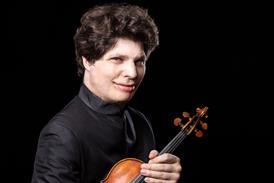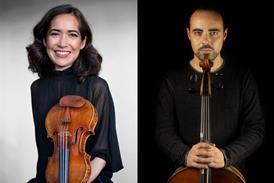The pervasiveness of YouTube has prevented many students from developing an individual voice, argues the Royal College of Music’s Mark Messenger
How can we find our individual voice when we learn a piece of music if, before we even put the bow on the string, we have heard it played a thousand times already? How can we bypass all that subconscious clutter to build our own relationship with a work and unlock its secrets? Recorded performances, captured in a moment of time, can inform our playing – but they can also become embedded in our minds and shape our sense of a piece. At its most benign, this may mean we copy a ‘magic moment’ that another performer has found in a note or a phrase; but this can easily become unconvincing affectation. I have often heard the elegant Heifetz portamento between the first and second notes of Saint-Saëns’s Introduction and Rondo capriccioso caricatured by players who could be great versions of themselves, but instead have become rather unconvincing Heifetzes.
Then there is the more insidious aspect of absorbing and replicating recordings, particularly when what we hear is not what the composer wrote. We are so used to hearing the last two lines of the Ysaÿe Ballade as a dash to the chequered flag. But look carefully: is that really what he wanted when he penned poco a poco slargando? How many times have you heard the dynamics that Mendelssohn actually marked in the cadenza of his E minor Violin Concerto? Probably very seldom.
It is not just violinists who choose to separate themselves from composers’ intentions. Cellists might consider more carefully the instructions in Elgar’s Cello Concerto, or phrasing and the placing of dynamics in the Dvorák and Schumann concertos. This is not so hard to do, and yet one or two seminal performances that interpret these pieces in an individual way have become part of our collective consciousness. If we are not careful, we may present the music not with our own understanding but through the prism of another performer’s perception, and one that might re-compose the music in a way that was not intended.
Of course, we are all limited by our own imagination, experience and knowledge, and great interpretations can expand our horizons and inform us. However, just as a good teacher enlightens us without dictating musically, so should we use recordings – they should not be part of the process of first getting to know the music. With truly great repertoire, we build a long-lasting, unique relationship, as we would when establishing a lifelong friendship with another person. The growth of such a relationship demands an investment of time and effort, and requires that we are open and receptive.
So, let’s get up close and personal with (for example) Brahms, who can teach us more about his music than anyone else. First, we should take the time to search and feel the music for ourselves: the harmony, the markings, the rhythm, what is happening in the other parts of the music. Then we can think about the sound: the bowing and phrasing, the fingering, the vibrato. How will our expressive technique bring the narrative to life? We can learn still more by looking at how he wrote for our instrument elsewhere, and how listening to his lieder can feed into our own ‘songs without words’. This is a fragile process whereby we are enlightened by Brahms before all else, so that each interpretation becomes a partnership between composer and performer.
How far this is from the current methodology of so many students (and indeed some less interesting professionals), whose first port of call is YouTube. The internet is an amazing resource for those who are intelligent enough to understand its value, but it is a trap for those who do not perceive the difference between learning the music and learning the notes. The bewildering array of performances comes with no health warning – the inspirational is mixed with the inadequate, and the inherent mediocrity of many recordings goes unnoticed as they are listened to repetitively until they enter the subconscious mind of the lazy practitioner.
Read: Why are string players today so afraid to use portamento?
































No comments yet